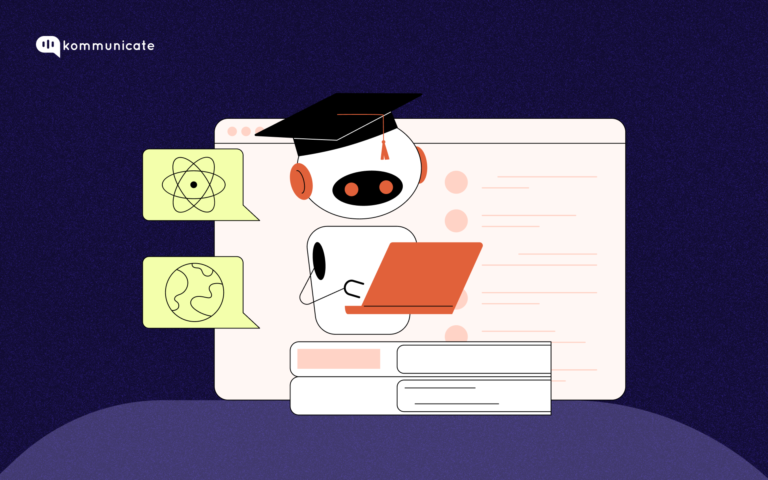Updated on May 29, 2024
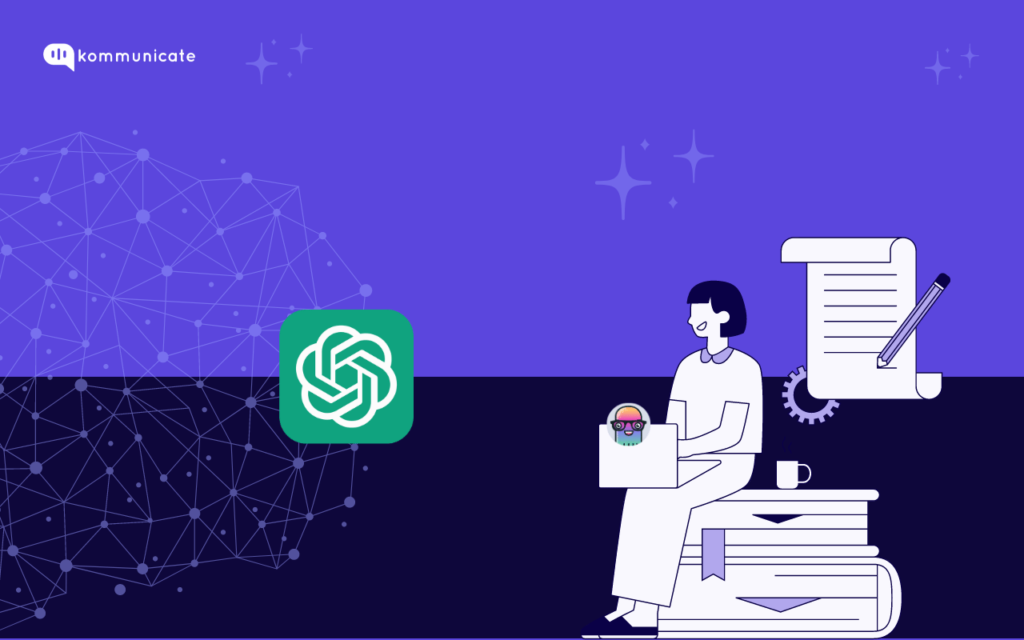
Hyper competition often leads to hyper innovation. This applies to businesses of all sizes, and enterprises are no different. In today’s fiercely competitive digitally driven environment, excellent in customer service is a must have for enterprises to survive. But how does one ensure that customers get the best service, considering the fact that the customer base is a large one?
The answer lies in leveraging solutions like AI-powered customer service chatbots, which can help businesses provide exceptional customer service at scale. These chatbots are not only equipped to handle a large customer base, but they can also personalize conversations with their multilingual capabilities, easy integration, and constant learning from previous interactions. Let’s understand this in more detail in the next section.
What is an AI customer service chatbot?
An AI customer service chatbot answers customer questions based on its training data. Such bots can understand user questions and maintain the context of the conversation, allowing them to resolve customer queries quickly and efficiently.
Earlier, training these bots required creating intents or integrating help centers. However, with recent advancements in generative AI, it’s now possible to train bots using website URLs or documents, making the process simpler and faster. It is now also possible to deploy these chatbots across multiple channels such as mobile apps, WhatsApp, Facebook, Telegram, Instagram, and more, further enhancing efficiency.
Here are some key benefits of using an AI customer service chatbot on your website –
- 24/7 Availability: Provides round-the-clock customer support without any downtime.
- Scalability: Handles a large volume of inquiries simultaneously, improving efficiency.
- Personalization: Tailored responses based on user data and conversation history.
- Cost-Effectiveness: Reduces the need for a large customer support team, saving on operational costs.
- Consistent Responses: Ensures uniform and accurate answers to customer queries.
Learn more about AI customer service chatbots here.
The Rise of ChatGPT
Though always around the corner, conversational AI has seen massive growth in the last few years, primarily after the release of ChatGPT – a generative AI chatbot launched by OpenAI in November 2022. Since then, we have seen the launch of many more models similar to ChatGPT, such as Bard (now Gemini) from Google, Perplexity AI, Megatron-Turing NLG from Nvidia, Jurassic-1 Jumbo from AI21 Labs, and WuDao 2.0 from BAAI, all pushing the boundaries of what large language models can do.
However, ChatGPT remains one of the most used platforms, with more than 150 Million users. We will learn more about its capabilities and benefits in this article.
Here’s a quick outline –
- Why is ChatGPT great for chatbot creation?
- Benefits of having a ChatGPT-powered chatbot for your enterprise
- Steps to Create an AI customer service chatbot with ChatGPT

Why is ChatGPT great for chatbot creation?
Explicitly, the very nature of the ChatGPT tool is conversational in nature, hence it works best to create a highly personalized customer service chatbot. Here are a few features of this tool that help in building better bots:
a. Language understanding
ChatGPT can comprehend and interpret user inputs, which can range from simple queries to more complex sentences. It’s capable of extracting intent, entities, and context from the provided text. This enables developers to use natural language interfaces for software that is simpler than command-based interfaces.
b. Response generation that is contextual
The ability to maintain context throughout a conversation based on the input it receives is ChatGPT’s USP. It generates responses that are contextually relevant and sound more human. Utilizing chat memory, ChatGPT can provide informative, creative, and engaging answers, which is crucial for creating engaging and effective chatbots.
c. Scalability and progressive learning
You can handle a large number of users concurrently, making it suitable for applications with high traffic and demand, such as customer support. Also, this tool learns on a continual basis depending on inputs and usage, learning and getting better with time.
d. Customization
OpenAI lets you fine-tune ChatGPT on specific tasks or domains. Additionally, fine -tuning enables developers to create chatbots that are good at a particular task. This makes the responses more accurate and relevant.
e. Multi-turn conversations and standard responses
This conversational AI tool can handle multi-turn conversations, where users engage in back-and-forth interactions. It can keep track of the conversation history and use it to generate appropriate responses. Standard responses are when developers handle ChatGPT errors by connecting to a human or providing a fixed response.
f. Integration
Also, one can integrate ChatGPT into various platforms and applications using APIs. This makes it easy to incorporate the chatbot functionality into websites, messaging apps, customer support systems, and more.
Benefits of having a ChatGPT-powered chatbot for your enterprise
- 24/7 availability: With a chatbot on your enterprise website, you are opening the doors to 24/7 availability. A recent study by Hubspot reveals that 82% of respondents expect brands to reply to them immediately.
- Reduced response time: ChatGPT powered chatbots significantly reduce the response time, driving higher satisfaction levels and improving the customer experience.
- Scalability: An enterprise usually has a high volume of inquiries that need to be handled simultaneously, and a ChatGPT powered chatbot can handle these concurrent requests easily.
- Cost savings: An IBM research indicates that chatbots can reduce customer service costs by up to 30%. Thus, implementing a ChatGPT powered chatbot can reduce the customer service costs and optimize resource allocation.
We have seen why enterprises need to implement a ChatGPT-powered chatbot to enhance their customer service function. Let’s see how you can design such a chatbot.
Steps to Create the Customer Service Chatbot with Chatgpt
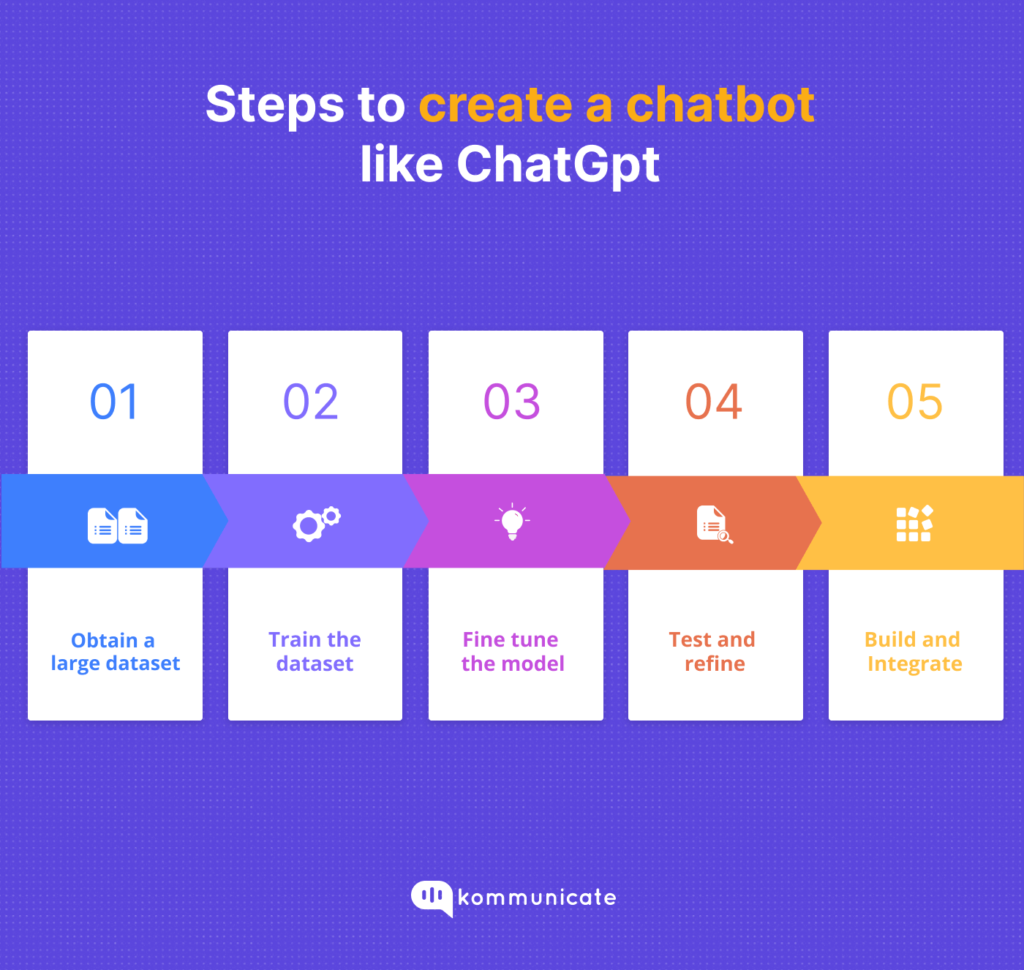
Step 1. Designing the customer service chatbot
Designing a customer service chatbot involves careful planning to ensure it effectively meets its primary goals and objectives. Let’s dive deeper into the key aspects of this process:
a. Primary goals and objectives
Additionally, identify the core objectives of your customer service chatbot. These could include:
- Providing quick and accurate responses to customer inquiries.
- Reducing the workload of human agents by handling common and repetitive queries.
- Enhancing customer satisfaction by offering 24/7 support.
- Collecting user feedback and data for continuous improvement.
b. Defining Target Audience and User Persona
Understand your target audience to tailor the chatbot’s interactions and responses. Create user personas representing typical customers who might interact with the chatbot. Consider factors such as demographics, preferences, pain points, and communication style. This helps in crafting responses that resonate with users.
c. Conversation flow and FAQs
You can design a structured conversation flow that guides users through their interactions with the chatbot. Start with a welcoming message and offer options for different types of queries or actions.
For example:
“Welcome to [Company Name] support! How can I assist you today?”
“Would you like help with account issues, product information, or something else?”
Prepare a comprehensive list of frequently asked questions (FAQs) based on common customer inquiries. Categorize these FAQs to align with the options provided in the conversation flow. Each FAQ should have a corresponding response that addresses the query accurately and concisely.
Step 2. Data collection and preprocessing
Data forms the backbone of any AI model’s training. Gather conversational data that represents the type of interactions your chatbot will handle. This could include customer queries, customer service agent responses, and other relevant conversations. Properly preprocess the data, ensuring it’s formatted and structured for effective training.
Step 3. Building and training your chatbot with ChatGPT
The OpenAI API offers a gateway to leverage ChatGPT’s capabilities. Set up your development environment and integrate the API into your project. Write code to interact with the ChatGPT API, providing prompts and receiving model-generated responses. Train your chatbot on custom prompts and examples to align its behavior with your desired outcomes.
The OpenAI API provides a way to integrate the ChatGPT model into your applications, enabling you to create interactive and dynamic chatbots. The API allows you to send a list of messages as input, where each message has a ‘role’ (either ‘system’, ‘user’, or ‘assistant’) and ‘content’ (the text of the message). The system message sets the behavior of the assistant, while user messages provide instructions or context.
Here’s a detailed breakdown of each step.
a. Create an API key
Initially, you will need to log in to the Open AI platform choosing ChatGPT.

Furthermore, select API Reference tab and choose View API keys from the drop down menu of your login profile.
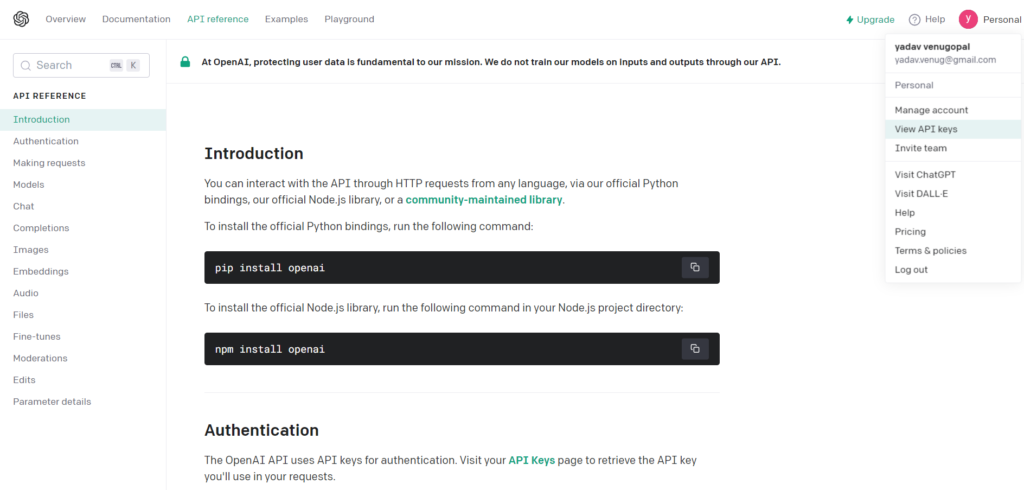
In addition, click Create new secret key and be sure to save the API key in a secure folder.
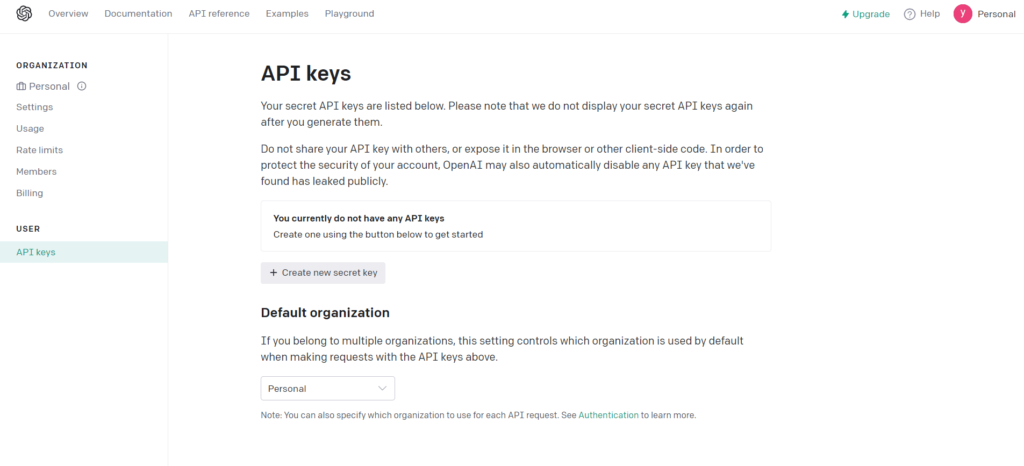
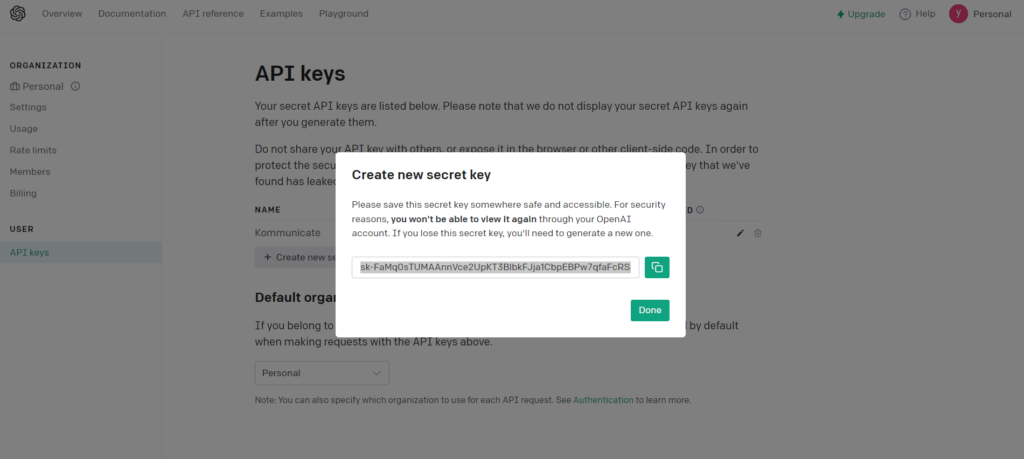
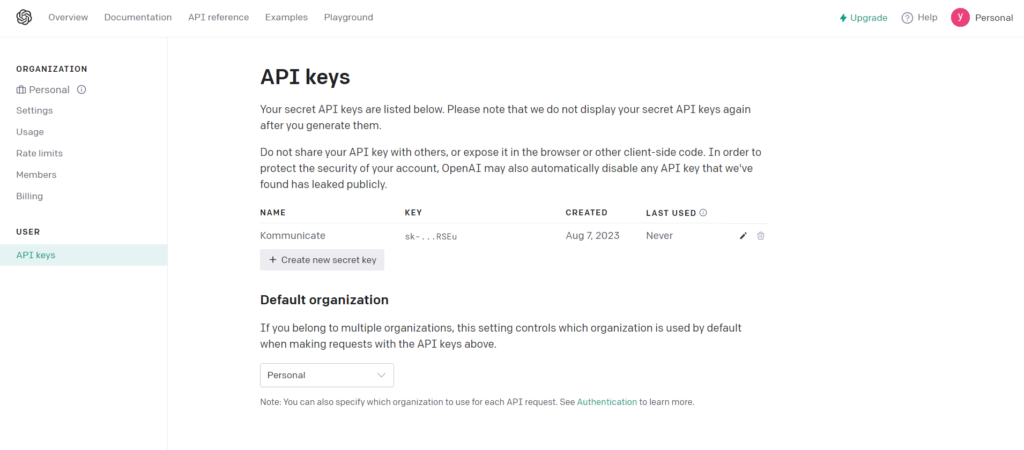
b. Download the relevant library from OpenAI
To create a chatbot using ChatGPT, you’ll need a suitable development environment. This typically involves a programming language of your choice (Python, for example) and libraries that can handle HTTP requests. Popular libraries like requests in Python can be used to make API requests to interact with the ChatGPT API.
Navigate to Documentation>Libraries>Python library and download the library.
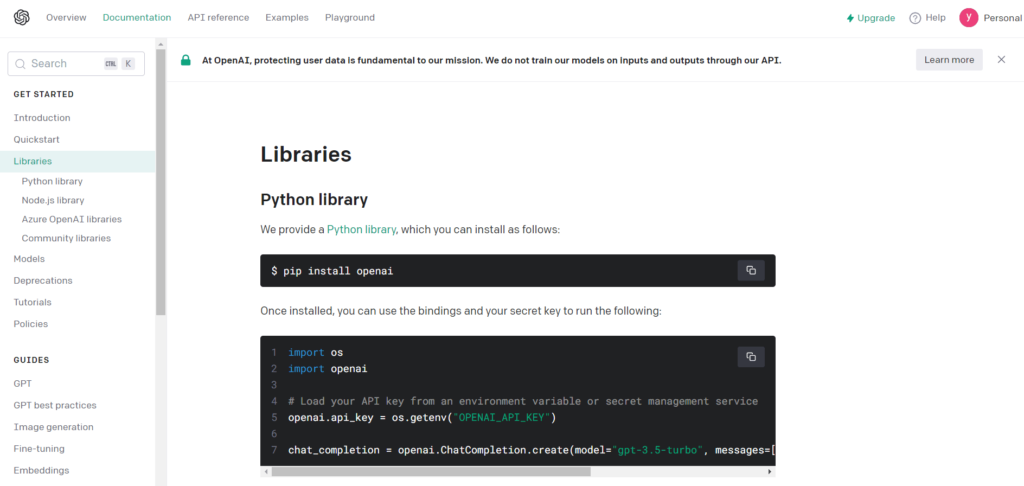
c. Coding for ChatGPT API
In addition, can structure your code to interact with the ChatGPT API in Python. Below is a basic example using the requests library in Python:
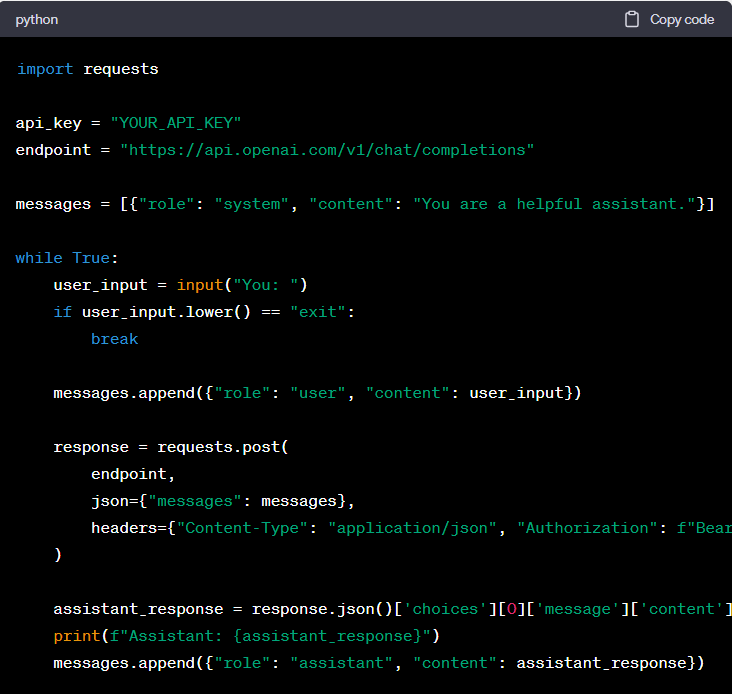
import requests
# Set your OpenAI API key here
api_key = "YOUR_API_KEY"
# API endpoint
endpoint = "https://api.openai.com/v1/chat/completions"
# Prompt to start the conversation
prompt = "You are a helpful assistant."
# Initial conversation
messages = [{"role": "system", "content": "You are a helpful assistant."}]
while True:
user_input = input("You: ")
if user_input.lower() == "exit":
break
messages.append({"role": "user", "content": user_input})
payload = {
"messages": messages
}
headers = {
"Content-Type": "application/json",
"Authorization": f"Bearer {api_key}"
}
response = requests.post(endpoint, json=payload, headers=headers)
data = response.json()
assistant_response = data['choices'][0]['message']['content']
print(f"Assistant: {assistant_response}")
messages.append({"role": "assistant", "content": assistant_response})
Make sure to replace “YOUR_API_KEY” with your actual OpenAI API key. In this example, the conversation alternates between the user and the assistant. The user provides input, and the assistant responds accordingly.
You can modify the prompt and messages to control the conversation and context. Also, make sure you have the requests library installed. You can install it using:

d. Chatbot Training on Custom Prompts
When training your chatbot, you can use custom prompts to guide its behavior. The initial system message helps set the tone, and user messages instruct the assistant. Through this iterative conversation approach, you can create dynamic interactions. Experimentation is key and you might need to iterate and refine your prompts to achieve the desired outcomes.
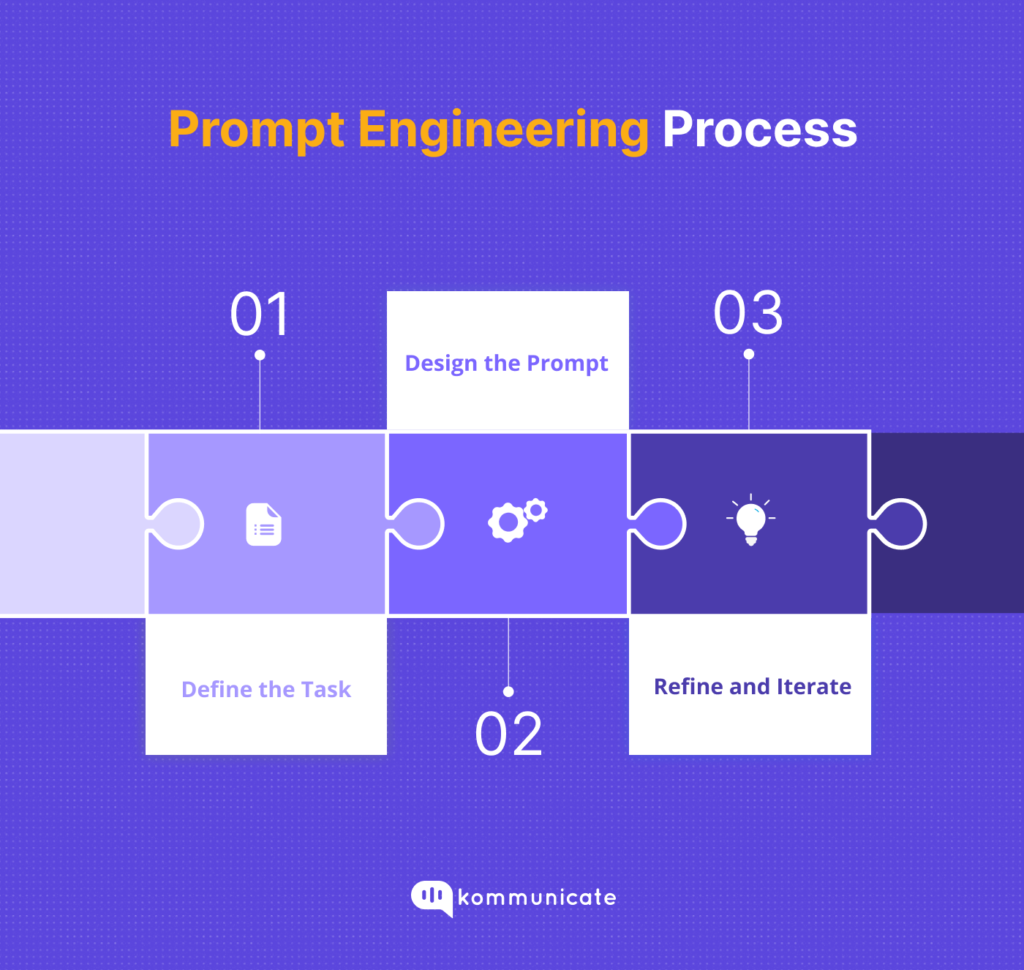
Step 4. Adding advanced chatbot functionalities
As chatbots continue to evolve, integrating advanced functionalities becomes crucial to delivering better conversational experiences for users. Natural Language Understanding (NLU) can help do this by enabling the chatbot to grasp context within user inputs. This allows the chatbot to interpret vague queries accurately and provide contextually relevant responses.
Furthermore, the ability to handle complex queries and multi-turn conversations enhances user interactions. A sophisticated chatbot can maintain a consistent conversational theme even with multiple inputs, switching from one topic to another easily.
Integrating external APIs expands the chatbot’s capabilities by enabling real-time retrieval of information from external sources. Such sources can even have dynamic data that change with time.
This enables the chatbot to provide up-to-date data, such as weather forecasts or stock prices, enhancing user engagement through better utility. By using these advanced functionalities, chatbots can sound more human to your users, making interactions more personalized, informative, and dynamic.

Step 5. Testing and quality assurance
The chatbot development process needs thorough testing and quality assurance to ensure an effective user experience. By optimizing through an iterative process, you can fine-tune chatbot responses to improve context accuracy, maintain appropriate tone, and better address user concerns.
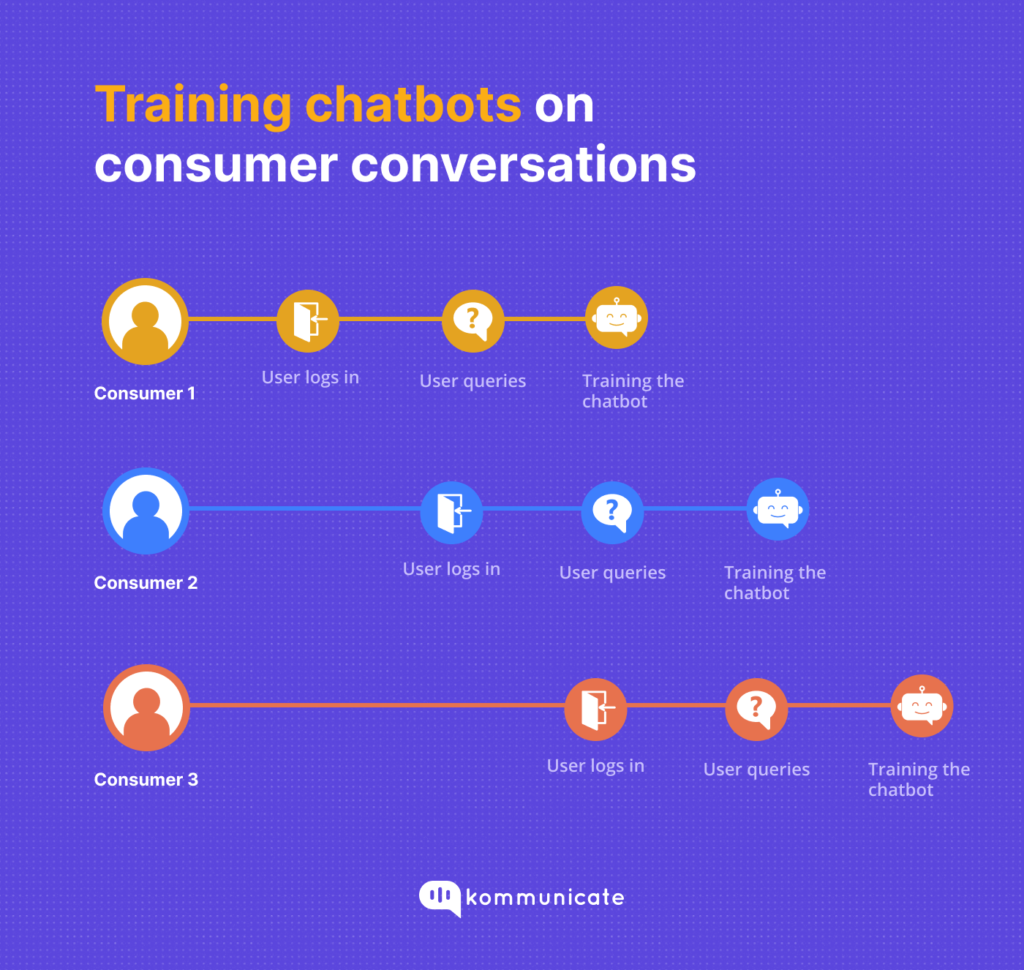
You can analyze and review chatbot interactions to identify areas of improvement, allowing developers to enhance the chatbot’s performance over time. In a business, user experience needs to be better than the competitors to act as a market differentiator. You can test and tune chatbots by creating various user personas and training the chatbots on conversations.
There are also historical and statistical data biases to consider where previous data pattern recognitions are used to derive inaccurate data insights. You need to ensure that the conversational data you are feeding your chatbot is being updated on a regular basis to ensure your chatbot remains effective and helpful to your users.
The alternative approach is to utilize a platform like Kommunicate, which offers native ChatGPT integration. With this integration, you can train the chatbot using ChatGPT by uploading your documents and URLs directly within the Kommunicate platform. If you’re interested in exploring further, you can check this article which has all the steps – How to Make a chatbot in Kommunicate.
The platform even allows you to provide custom instructions to adjust the tone of the responses, and it also has the capability to include the source URL of the response, along with multilingual and multichannel capabilities.
Summing Up
AI chatbots are transforming the customer service space as we know and understand it. Aside from text-based bots, we are now also seeing the introduction of advanced voice bots, video bots, and virtual assistants, all aimed at enhancing customer interactions and support experiences.
For organizations worldwide, integrating AI into their customer service operations is no longer optional but imperative. However, amidst technological advancements, the ultimate focus should always remain on the customers’ needs and whether the technology genuinely enhances their experience—a guiding principle that should govern all metrics and decisions.

As a seasoned technologist, Adarsh brings over 14+ years of experience in software development, artificial intelligence, and machine learning to his role. His expertise in building scalable and robust tech solutions has been instrumental in the company’s growth and success.
At Kommunicate, we envision a world-beating customer support solution to empower the new era of customer support. We would love to have you on board to have a first-hand experience of Kommunicate. You can signup here and start delighting your customers right away.


